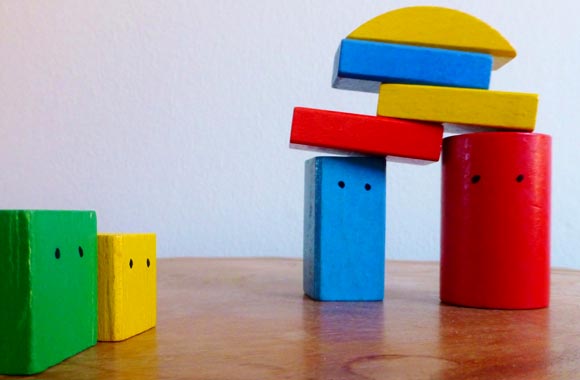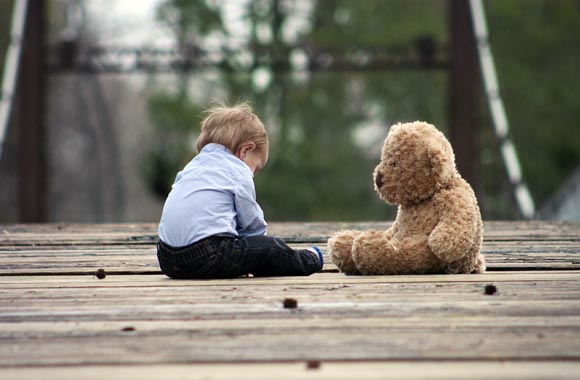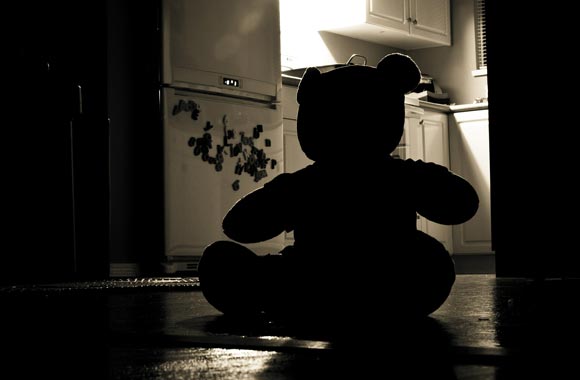Everything you need to know about autism disorders.

Autism Disorders
Autism disorders, also known as autism spectrum disorders, cover a wide range of disorders within them and these all are developmental disorders characterized by children’s poor communication and social interaction. In some disorders, there are speech problems while in some there is a motor deficit. These disorders usually arise at an early age and they clearly express themselves. Most autistic disorders are due to unknown causes. Children suffering from these disorders exhibit strange activities and movements. They found it difficult to interact with people so they lag in social interaction. These result in various psychological problems in the children.
Types
These disorders cover five major types or forms under them. These are:
Pervasive Developmental Disorder – This is characterized by children’s failure to communicate and interact. This disorder arises around the age of about two to three years. These children find the language difficult to understand so they do not interact verbally. They show movement disorders and many repeating movements.
Childhood Disintegrative Disorder – In this disorder child is normal till 3-4 years of his age, then he suddenly develops a delay in the developmental process. His milestones already achieved get lost and he becomes unable to walk or talk properly. Important skills of social interaction and communication among these children are also lacking.
Autism – This is one of its most commonly seen forms. Here children are rigid towards life, do not show interest in many things, their interest is limited to only a few things, and do not talk properly. There is seen a constant stereotype of behavior in these children such as strange movements by the hands. They tend to follow a rule and show resistance to doing some change.
Asperger Syndrome – In this disorder problems in communication and social interaction are also seen. They do have normal speech but they use it very strangely. These also show a limited range of interests in objects. Facial expressions are not well but poor. This disease is seen to run in families. It is thought to result from genetics as well as various other factors. The children suffering from this disease have problems related to their sleep i.e. they find it difficult to fall asleep and also experience frequent waking. These children could not express themselves or problems related to them to their elders or anyone.
Rett’s Syndrome – In this disorder, there is poor development of the gray matter which is found within the brain. This thing leads to a wide range of symptoms. These children suffer from fits, social withdrawal, panic attacks, problems in coordination and balance, speech loss, and many sensory problems and there may be found hypotonia and ataxia. This disease is due to the mutation of the gene MECP2.
Diagnosis
The diagnosis of all forms of autism spectrum disorders is done based on their various symptoms and complete history. MRI can be used to check any other brain abnormality. But there is no diagnostic test available.
Treatment*
This is mostly done by the use of certain therapies such as behavioral therapy, speech therapy, or occupational therapy. These therapies enable the child to behave in a good way and to function independently. Other symptoms of the disorders are treated by the use of medication.

Autism
Autism is a disorder due to neural abnormal development which leads to poor communication skills and strange behaviors in children. These are seen in children before four years of age approximately. This disease affects the process of information in the brain and this is due to changes in the nerve cells and their synapses.
Etiology
Autism is thought to be due to genetic and neural defects. Although exact causes are unknown there are seen abnormalities at chromosomal levels. Synaptic dysfunctions are also thought to be autism causes. Various environmental factors, as well as social factors, are also involved in causing this disease. It is said that this disease occurs due to abnormalities in brain functions soon after conception. Excess neurons are found and their activity along with altered neural migration at the time of gestation. In this disease decrease, functional connectivity is seen in the large area of the brain network which is typically involved with social and emotional processing.
Signs and Symptoms
The children suffering from this disease remain busy with themselves and prefer to spend time alone and only with themselves. They don’t like to have any social interactions. They may not even talk, they communicate via gestures only, do not see an object or make eye contact, do abnormal movements, show attachment with things, and show sensitivity toward painful stimuli, smell, hear, touch, and hear. They show word repetition and produce unusual sounds by mouth. They lack apathy but can memorize things. These children show repetitive behaviors and tend to follow rules, repeat movement, can injure themselves, show a changeable pattern of activity on daily basis, and are limited to one thing, and focus is also limited to only a single object.
Diagnosis
It is usually made based on a child’s strange behavior. There are three scales for checking autism, namely:
Child Autism Rating Scale: This scale checks the severity of autistic behavior in children.
Autism Diagnostic Observation Schedule: As the name indicate it makes use of children’s interaction and observation.
Autism Diagnostic Interview: Along with complete history and certain tests and examinations, this disease can be diagnosed easily.
Treatment* Plan
The good treatment of autism is the most important goal for a better life for children. In this case, the education of parents is necessary about this disease so that they can better create understanding with their children about such behavior. Such an autistic child needs continuous help and support. Certain medicines can be used to provide a symptomatic cure but there is no actual cure for this disease. These medicines include antidepressants and neuroleptics.
Certain therapies can make such autistic children function independently. These are:
Treatment and education of autistic and related communication: In this technique use of visuals and pictures enable the child to do his work independently and also enables them to be organized. This aim is to make improvements in children’s abilities.
Applied behavioral analysis: This technique is to make the child normally develop his functions. It is mostly applied to very young children. This technique is usually done in the child’s home.
Occupational therapy: It has also been found helpful in such patients.

Asperger Syndrome
Asperger syndrome is one of the autism disorders, in which problems in social communication and interaction occur. There are delays in the development of very important skills such as a child suffering from this disorder cannot catch anything thrown or ride a bicycle. This disease is commonly seen in children but these children are found better in certain functions as compared to the autistic. Asperger syndrome is more common in boys as compared to girls.
This disorder was described by Hans Asperger so from his name this disease name came. In this syndrome, a child shows a strange pattern of interest and repetitive behaviors. There also seem problems in speech patterns related to this syndrome. Since such children show a lack of social interaction so their talking styles are also strange. They talk rapidly, and loudly. They can even talk about such topics which can lead to boredom among people.
Children with this disorder show particular weaknesses in the regions of non-literal languages. So they lack a sense of humor, teasing, and irony. But their understanding of the humor and teasing is intact. Their intelligence is also above average.
Cause
The exact cause of this syndrome is yet not known. But it is genetically and hereditary linked. Asperger’s disease is found to be run in families.
Signs and Symptoms
This disease is a spectrum of a wide variety of symptoms. These are:
Lack of social interaction: These patients show difficulty while interacting with others or initiating anything.
Lack of coordination: Due to clumsy movements there are coordination problems in these children.
Problems in communication: There is a constant problem in their way of communication. They cannot even make eye contact while talking. They cannot show facial expressions as required.
Obsession: It is found that these children become obsessive about limited things and only show minimal interest. Their interest is limited to only a few areas of life.
Motor abnormalities: There are seen many repetitive motor movements in these children. They show the strange hand and finger movements. Their whole-body movements are abnormal in fact.
Language problem: They cannot make proper use of their language, speech, and expression. They speak in such a tone that the other person lost interest in them and their talking.
Diagnosis
This is also made based on a child’s strange and abnormal behavior and body movements as there is no exact test to tell this syndrome properly and exactly. Brain examination is necessary as well as physiological and blood tests are usually done to evaluate the disease properly.
Treatment*
Since this is a disease of unknown etiology so treatment is based only on the symptoms. Depressive type of symptoms is successfully treated with the use of antidepressants and neuroleptics. Movement disorders can be treated with antiepileptics. This syndrome’s treatment’s basic aim is to improve the cognitive functions of the children along with improving their skills. So these can be achieved through different therapies like speech therapy, occupational therapy, talk therapy, and social skills training. So you have to take your child to neurologists, psychologists, and speech therapists.

Rett’s Syndrome
Rett’s Syndrome is the disease of the grey matter of the brain and is one of the developmental and neurological disorders. It has been noticed more in females than males. The brain does not grow at a normal rate and so strange behaviors and movements are seen in hands and problems in walking and doing anything. It is one of the disabling diseases which lead to problems in the eyes, speech, and walking. It is one of the autism disorders.
Causes
This disease is genetically linked and is due to a mutation in the gene MECP2 gene which is located on the sex chromosome which is the X chromosome. The brain study of these children shows decreased levels of norepinephrine and dopamine
Stages
It has four stages.
Stage 1: This is the stage that begins at the age of 6 to 18 months and shows a slow-growing developmental process like a baby does not show proper eye contact, does not show normal sitting and crawling.
Stage 2: This is the stage that begins at age of 1- 4 years. Here child shows abnormal hand movement while clapping or tapping. Breathing abnormalities also occur in this stage. There is also the loss of social interaction and communication.
Stage 3: This is a stage that begins at the age of 2 to 10 years and is characterized by prominent seizures, motor dysfunction, child attention increases and there is less irritability also noted among such children in this stage.
Stage 4: It is the stage where motor deterioration is intense and it is characterized by scoliosis, weakness of muscles, rigidity, and spasticity as well, as reduced movement disorders, and abnormal postures of the body, arms, and legs. Girls stop walking at this stage.
But mostly these children enter into adulthood.
Signs and Symptoms
These children show the following signs and symptoms, crying, fits, feeding problems, avoidance of eye contact, speech problem, lack of interest, abnormal hand movements, slow growth, inability to walk properly, social withdrawal, small-sized head or even brain, loss of balance and coordination problems, ataxia may be seen along with chorea, swallowing and gastrointestinal problems such as constipation. These children are usually short stature and their body postures are also inappropriate.
Diagnosis
This disease is mostly diagnosed based on its signs and symptoms. Even its early detection is possible. If you find your child suffering from any of the symptoms presented above do consult a doctor.
Treatment*
Although there is no proper treatment for this disease and has no cure, supportive therapy can be beneficial for their better quality of life. The treatment strategy is based on restoring the normal function of the mutant gene by insulin-like growth factors. Then symptoms of this disease are treated so that child spends a peaceful life. These include treatment of breathing difficulties and gastrointestinal problems. Their communication skills can be improved by behavioral and speech therapy. Their seizures can be controlled by antiepileptic drugs. They can be given certain important therapies like occupational so that they may do their work easily without needing anyone’s help. With the help of such treatment, a patient can live a long life and can enter adulthood and beyond.

Childhood Disintegrative Disorder
Childhood disintegrative disorder is a spectrum of developmental delay in the social aspect as well as in motor skills. This disorder starts showing itself at later age usually at the age of 3 years in the children. This disorder is given another name Heller Syndrome and leads to complete social, language, and communication disability. Here children develop normally until a certain age and then abrupt changes start taking place and they completely lost their social and communication skills. This disorder is similar to autism and is one of the forms of autistic disorders as well as Pervasive Developmental Disorder
Cause
This disorder‘s cause is not known. There seem no abnormalities in the brain and nervous system. This disorder is associated with many diseases such as tuberous sclerosis which is characterized by tumors growth in a variety of body organs, other diseases are lipid storage diseases affecting the brain and the central nervous system, and subacute sclerosing panencephalitis in which prolonged infection prevails in the brain due to measles, producing inflammation within the brain and causing the death of the brain as well as nerve cells, so this disorder arises.
Signs and Symptoms
Here children can listen, understand, and can express the words up to age, and the loss of these functions starts taking place. The child becomes incapable to attract socially, cannot talk or maintain his talk, loses motor ability, does not take interest in play, or does not play at all, at school he shows no interest in his class fellow, so he cannot make proper relations with them. He loses many of his skills, and even this disorder leads to his loss of control of his urination as well as feces excretion. He shows movement which repeats again and again.
Diagnosis
Although there is no such test available that makes the exact diagnosis of this disease. But the loss of an already achieved milestone is considered to be a diagnostic tool here for this disorder. If he has lost already three of them then it will consider this disorder as diagnosed.
Certain tests like blood tests and urine tests are done to check the other diseases or hormonal levels causing these symptoms. MRI can be undertaken.
Treatment*
Treatment follows the same pattern as in autism as these two disorders are similar. It is done by the combination of pharmaceutical intervention along with certain important therapies.
The use of medicine is not helpful to cure this childhood disintegrative disorder as there is no such drug formed yet. But some drugs provide relief from the symptoms and this is done by the use of neuroleptics and anticonvulsant drug treatment. Neuroleptics are used to control a child’s irritative, psychotic, and aggressive behavior while the anticonvulsant successfully controls the child’s seizure complaints.
Behavioral therapies include speech therapies and occupational therapies. These therapies aim to make the children skillful, enable them to interact with people, communicate well, speak up well, and learn certain important skills. Her parents are also guided about taking care of such children. Their support, care, and love are needed in making improvements in a child’s behavior.

Pervasive Developmental Disorder
Pervasive Developmental Disorder is the disorder in the development of the human brain’s important functions of communication and social interaction. There is a delay occurred in these important human tools due to some abnormality in the brain. The delay in cognitive, as well as behavioral development, is also noticed with this disease. Such children remain confused and could not understand their surroundings. The cause of this disorder is still unknown.
Different Forms
There are five major forms of this developmental disorder, namely
Autism: In this disorder, children become somewhat rigid, do not interact, repeat the same words, lack social interests, and do not have any communication skills. They try to be lonely. Activities are also limited to certain things.
Childhood Disintegrative Disorder: Here children develop normal functions of the body but at some stage in their early life around the age of about 2-10 years, they lose all such functions. They even lost their excretory control of urine and feces along with speech and language skills loss.
Rett’s Syndrome: This X-linked disorder, in children, is marked by loss of motor movements. Children become unable to move and walk and there are coordination problems as well in these patients.
Asperger Syndrome: Here children show the same trait as autistic children show but these are better in a certain way than autistic children. Their intelligence is not very poor and can better show some kind of social interest. These children show poor language and speech patterns.
Pervasive Development Disorder Not Otherwise Specified: In this condition, the child shows no interest in people and is poor at communication. They cannot initiate things and remain uninterested in various matters.
Signs and Symptoms
This disease can be early recognized. Usually, at the age of three years, the child starts showing symptoms of this disorder. Various signs and symptoms include:
- These children cannot make eye contact, in fact, avoid it.
- They cannot understand the language and therefore cannot use it.
- Show a lack of interest in everything and unlike a normal child who explores things they do not show these characteristics.
- These children experience abnormal hand movements like tapping, flapping, or spinning type of movements.
- They show trouble while interacting with others so cannot properly interact and communicate.
- Milestones’ development slows down and also there is the loss of those developmental milestones which were achieved previously.
- These children find it difficult to relate to different people, things, or even events.
- They just play unusually with the toys and other things.
- Problem with going to sleep plus there is difficulty in sleeping
- Aggressive and irritative behavior
Diagnosis
It is made only based on symptoms of the disease. There is no such test that can tell about the pervasive developmental disorder. MRI can be done to check brain conditions for other diseases. Certain biochemical tests are usually done to make a correct diagnosis and to exclude other differential diagnoses.
Treatment*
There is no such cure for the pervasive developmental disorder. Children should undergo certain behavioral, speech, and physical therapies which can result in some improvement in these children’s behavior. Pharmaceutical intervention can be done to give symptomatic relief.